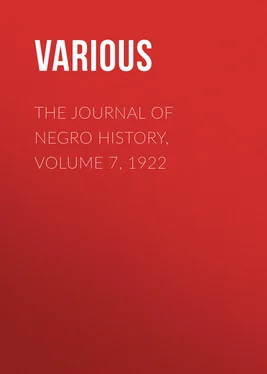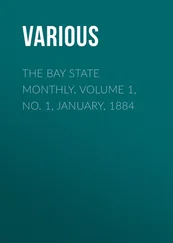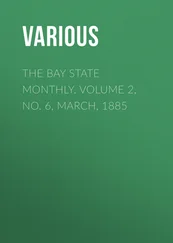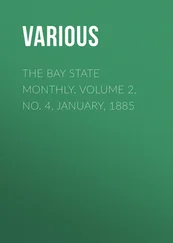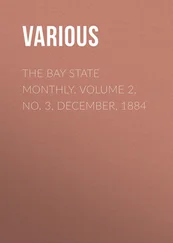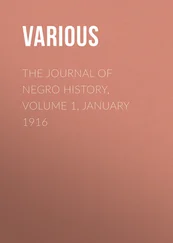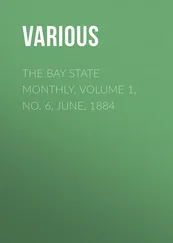Various - The Journal of Negro History, Volume 7, 1922
Здесь есть возможность читать онлайн «Various - The Journal of Negro History, Volume 7, 1922» — ознакомительный отрывок электронной книги совершенно бесплатно, а после прочтения отрывка купить полную версию. В некоторых случаях можно слушать аудио, скачать через торрент в формате fb2 и присутствует краткое содержание. Жанр: foreign_antique, periodic, История, foreign_edu, на английском языке. Описание произведения, (предисловие) а так же отзывы посетителей доступны на портале библиотеки ЛибКат.
- Название:The Journal of Negro History, Volume 7, 1922
- Автор:
- Жанр:
- Год:неизвестен
- ISBN:нет данных
- Рейтинг книги:3 / 5. Голосов: 1
-
Избранное:Добавить в избранное
- Отзывы:
-
Ваша оценка:
- 60
- 1
- 2
- 3
- 4
- 5
The Journal of Negro History, Volume 7, 1922: краткое содержание, описание и аннотация
Предлагаем к чтению аннотацию, описание, краткое содержание или предисловие (зависит от того, что написал сам автор книги «The Journal of Negro History, Volume 7, 1922»). Если вы не нашли необходимую информацию о книге — напишите в комментариях, мы постараемся отыскать её.
The Journal of Negro History, Volume 7, 1922 — читать онлайн ознакомительный отрывок
Ниже представлен текст книги, разбитый по страницам. Система сохранения места последней прочитанной страницы, позволяет с удобством читать онлайн бесплатно книгу «The Journal of Negro History, Volume 7, 1922», без необходимости каждый раз заново искать на чём Вы остановились. Поставьте закладку, и сможете в любой момент перейти на страницу, на которой закончили чтение.
Интервал:
Закладка:
Because of the unsettled policy of the Charleston public schools they changed principals every year or two, to the detriment of the system and progress of the student body. Rev. J. W. Dansbury served for a while as principal, and H. B. Rice, who entered the service as an assistant in 1888, became principal some time later and served about four years. Mr. Davis, who had been demoted to a subordinate position, was then reinstated, but not long thereafter came Mr. C. W. Boyd, who had rendered valuable service in Clarksburg and had later found employment in the public schools of Charleston. He succeeded Mr. Davis as principal. At the close of one year, however, Mr. Rice was reinstated and served for a number of years, at the expiration of which Mr. Boyd again became principal and remained in the position long enough to give some stability to the procedure and plans of the system and to secure the confidence of the patrons of the schools. Some of the valuable assistants serving during this period were Mr. William B. Boss, Miss Blanche Jeffries, Mrs. Fannie Cobb Carter and Byrd Prillerman, whose career as a teacher includes a period of short and valuable service in the Charleston public schools. 48
At what is now Institute, in Union district, there was established in the fall of 1872 another Negro school, opened on the subscription basis in the home of Mrs. Mollie Berry, née Cabell. Mrs. Berry was the first teacher of this school. The building is occupied at present by a Mr. James and owned now by Mrs. Berry's daughter, Mrs. Cornie Robinson. In the spring of 1873, Mr. William Scott Brown, who had by marriage connected himself with the Cabell family, was elected trustee in the Union district, and by his efforts a Jenny Lind one-room building, small and creditably furnished, was erected on a lot purchased by the board of education from Mrs. Cabell for twenty-five dollars, on the site now occupied by the family of Mr. Solomon Brown of Institute. The trustees chose Mr. Samuel Cabell as the first Negro public school teacher of the district. The method of qualifying as a teacher was purely perfunctory, as a license to teach was easily obtained by nominal examination. The term was four months. 49The line of teachers from 1886 may be traced from records of the board of education of the district. Short tenure of office for a few years seems to have been the rule until the recent years dating from 1918. It is the opinion of Mr. W. A. Brown and others of the old system that the quality of the local school has grown better. The establishment of the West Virginia Collegiate Institute at this point is considered the greatest factor contributing to such development. 50
The next school of consequence established on Kanawha River was the Langston School of Point Pleasant, in Mason County. This institution was organized in 1867 by Eli Coleman, its first teacher. He toiled for seven years in the one-room frame structure at the end of Sixth Street. At the very beginning the enrolment was sixty-four, some of the students being adults. The school continued as an ungraded establishment for a number of years, working against many handicaps, until the independent district was established and provided better facilities. This school then had a board of five trustees, three whites and two Negroes, and was incorporated into the city system by the Board of Education and placed under the supervision of the Superintendent of the Point Pleasant Public Schools.
Some of the early teachers following Mr. Coleman were J. H. Rickman, later principal of the colored school in Middleport, Ohio, P. H. Williams, Mrs. Lillie Chambers, Florence Ghee, Fannie Smith and Lida Fitch. In 1885 the school had grown sufficiently to justify the employment of two teachers. These were then L. W. Johnson as principal and Miss Hattie C. Jordan as his assistant. Mr. Johnson served until 1890 when he was succeeded by Miss Lola Freeman as principal with Samuel Jordan as assistant for one year. The Board of Education then secured the services of J. E. Campbell as principal. Under him the school moved into a five-story brick structure vacated by a white school when better quarters for the latter had been provided. The Negro school was then named the Langston Academy in honor of John Mercer Langston, a Negro congressman and public official of wide reputation. Miss Iva Wilson of Gallipolis succeeded Mr. Campbell as principal, with Miss Jordan as assistant. Later there came as principal Mr. F. C. Smith, A. W. Puller, and Ralph W. White, and finally the efficient and scholarly Isaiah L. Scott, a promising youth cut off before he had a chance to manifest his worth to the world. 51
Somewhat later than this, another group of Negro schools developed in Cabell County, the first and most important being in Guyandotte and Barboursville. These schools followed as a result of employment of Negroes on the Chesapeake and Ohio railroad, terminating in the seventies at the Ohio River, where it gave rise to the city of Huntington, West Virginia, laid out in 1870. Most of these Negroes, prominent among whom were James Woodson, Nelson Barnett, and W. O. James, came from Virginia. The first school established near Huntington was opened in the log house on Cemetery Hill, one and a half miles east of the town and a little west of Guyandotte. The Negro school enumeration was so small that the two towns had to cooperate in maintaining one school.
The teacher first employed was Mrs. Julia Jones, a lady who had most of the rudiments of education. Some old citizens refer to James Liggins as the first teacher in this community. In this precarious status of stinted support the school did not undergo any striking development during the first years. Not until 1882, some years after the school had been removed to Huntington itself, was there any notable change. The first impetus which marked an epoch in the development of this school came with the employment of Mr. and Mrs. W. F. James, products of the Ohio school system. They were for their time well-prepared teachers of foresight, who had the ability to arouse interest and inspire the people. Mr. James at once entered upon the task of the thorough reorganization of the school and by 1886 brought the institution to the rank of that of the grammar school, beginning at the same time some advanced classes commonly taught in the high schools. He was an earnest worker, willing to sacrifice everything for the good of the cause. While thus spending his energy as a sacrifice for many he passed away respected by his pupils and honored by the patrons of the school. His wife continued for a number of years thereafter to render the system the same efficient service as the popular primary teacher upon which the success of the work of the higher grades largely depended, until she passed away in 1899.
The school then had the services of Mr. Ramsey and Mr. J. B. Cabell who seemingly gave some impetus to the forward movement. Another epoch in the history of the school was reached when W. T. McKinney became principal in 1891. With the cooperation of the leading Negroes of the city he succeeded in inducing the board of education to build on the corner of Sixteenth Street and Eighth Avenue the Douglass High School, which in its first form, prior to the making of certain additions, consisted of a well-built six-room school costing several thousand dollars. Mr. McKinney added the high school course and in the year 1893 graduated the first class of three. Following Mr. McKinney there served the system efficiently as principals C. H. Barnett from 1890 to 1900, C. G. Woodson from 1900 to 1903, and R. P. Sims from 1903 to 1906. J. W. Scott, who succeeded Mr. Sims, is today principal of this school, ranking throughout the State as one of its foremost educators.
Following along the line of Wayne County there soon appeared a school at Ceredo and another at Fort Gay, just across the river from Louisa, Kentucky. Under Mrs. Pogue, a woman of ambition and efficiency, this school accomplished much good and exerted an influence throughout that county. A number of students trained through the sixth, seventh, and eighth grades later attended schools in other parts and made good records because of the thorough training they first received. At Fort Gay in this same county, however, no such desirable results were achieved because of the small Negro population, the inability to secure teachers for the small amount paid, and the tendency on the part of local trustees there to change their teachers. Mrs. Cora Brooks Smith, a graduate of the Ironton High School, who toiled there a number of years, and Miss Susie Woodson, an alumnus of the Douglass High School of Huntington, West Virginia, who also labored in the same field, should be given at least passing mention in any sketch setting forth the achievements in education among the Negroes in Wayne County.
Читать дальшеИнтервал:
Закладка:
Похожие книги на «The Journal of Negro History, Volume 7, 1922»
Представляем Вашему вниманию похожие книги на «The Journal of Negro History, Volume 7, 1922» списком для выбора. Мы отобрали схожую по названию и смыслу литературу в надежде предоставить читателям больше вариантов отыскать новые, интересные, ещё непрочитанные произведения.
Обсуждение, отзывы о книге «The Journal of Negro History, Volume 7, 1922» и просто собственные мнения читателей. Оставьте ваши комментарии, напишите, что Вы думаете о произведении, его смысле или главных героях. Укажите что конкретно понравилось, а что нет, и почему Вы так считаете.
